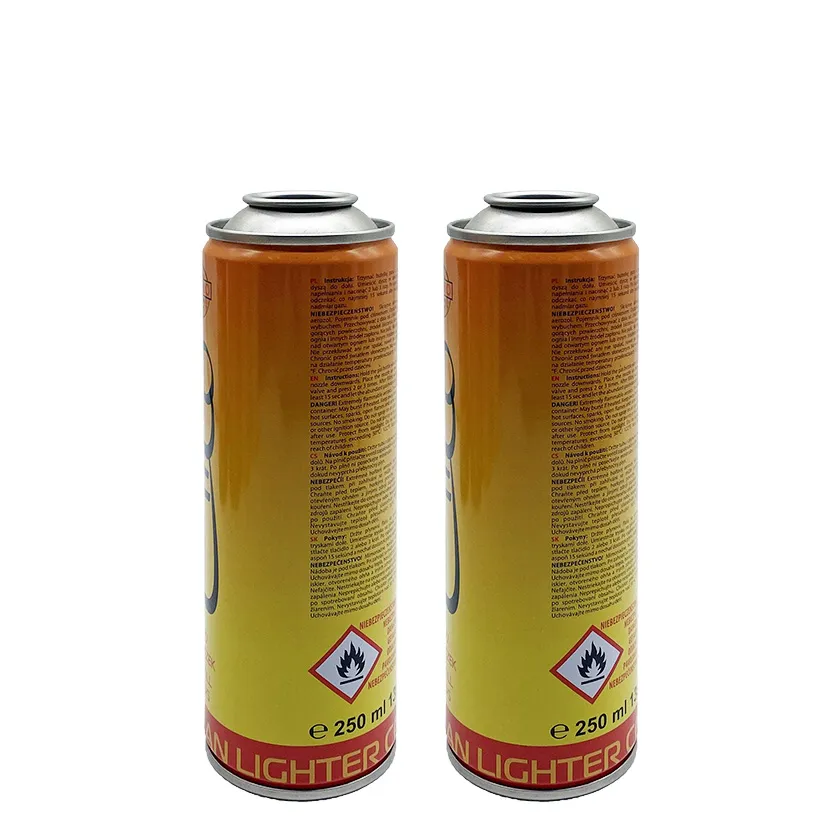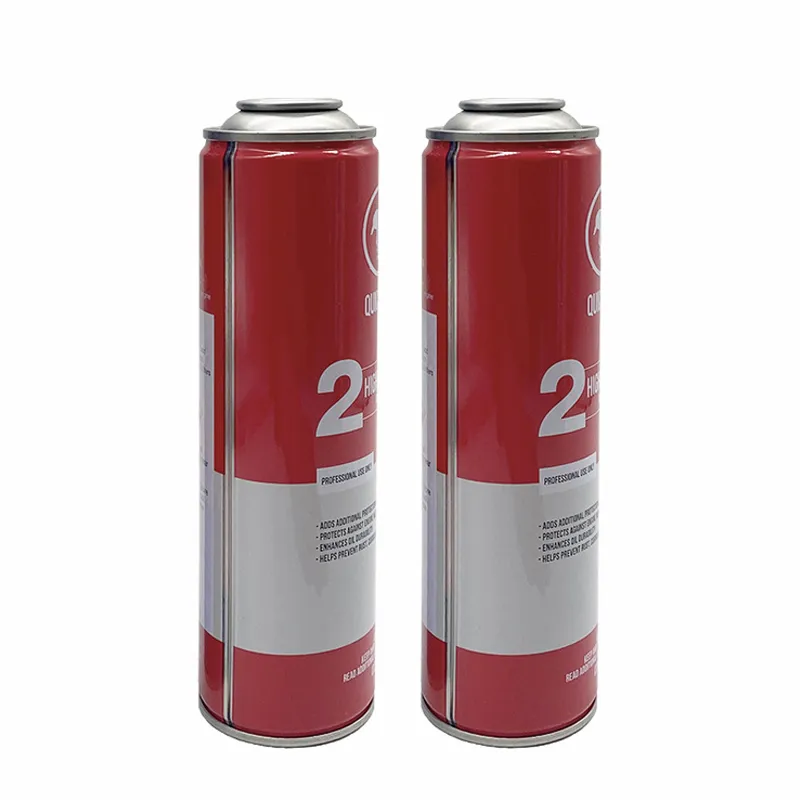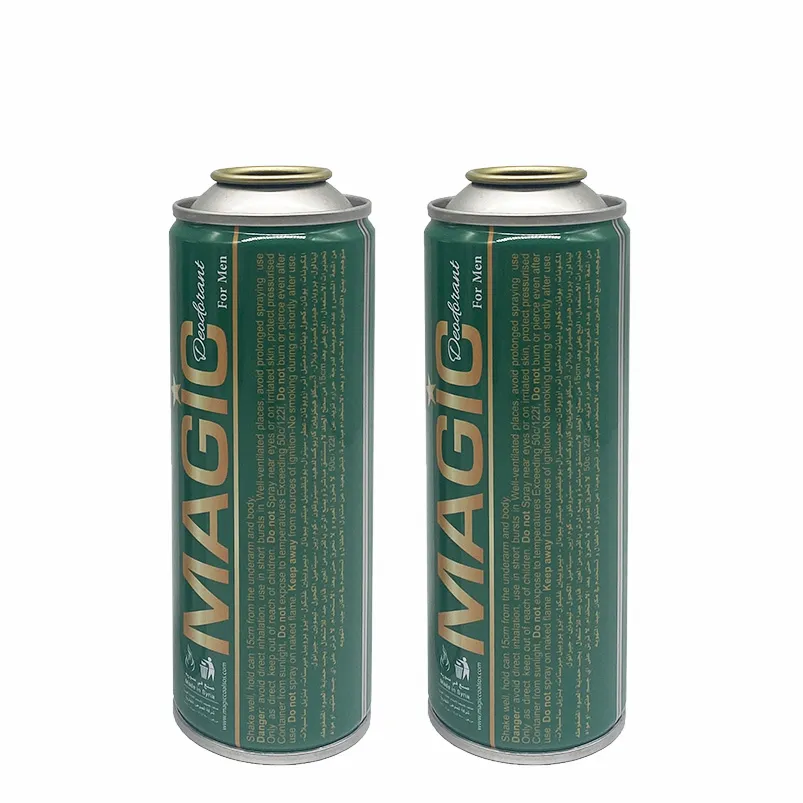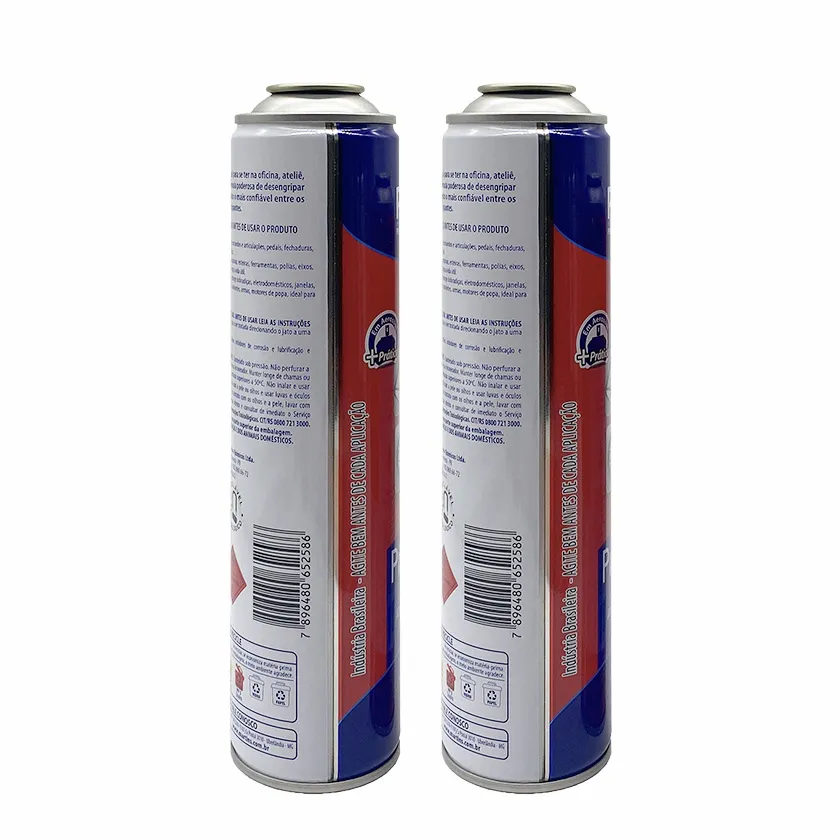Aerosol tin cans, due to their convenient use and wide range of applications, play an important role in daily life and industrial production. Whether it is household cleaners and pesticides, or industrial spray paints and lubricants, aerosol tin cans are indispensable.
So, what are the raw materials used to make aerosol tin cans? How do these materials ensure the quality and safety of aerosol tin cans? This article will deeply analyze the raw materials used to make aerosol tin cans and reveal the science and technology behind them.

Overview of the structure and raw materials of aerosol tin cans
The basic structure of aerosol tin cans includes five parts: tank body, valve, nozzle, propellant and contents. The material selection of each part is crucial and directly affects the performance and safety of aerosol tin cans.
1. Tank body: The tank body of aerosol tin cans is usually made of metal materials, mainly steel, aluminum and tinplate.
2. Valve and nozzle: These two parts are usually composed of plastic and metal parts, and the specific materials depend on the purpose and needs.
3. Propellant: Propellant is the key substance that makes the contents spray out. Commonly used propellants include liquefied gas and compressed gas.
4. Contents: The actual substances used in aerosol tin cans, such as spray paint, pesticides, detergents, etc.

Can body materials
1. Steel: Steel is one of the main materials for making aerosol tin cans. Its advantages are high strength and good pressure resistance, which is suitable for storing high-pressure gases. But steel is easy to rust, so it is usually treated with anti-corrosion treatment on the surface, such as galvanizing or spraying.
2. Aluminum: Aluminum cans are lightweight and rust-proof, especially suitable for products with strict weight requirements. Aluminum cans also have good plasticity and can be made into cans with complex shapes. However, the cost of aluminum is high, and the purity of the material needs to be strictly controlled during the manufacturing process to ensure the safety of the product.
3. Tinplate: Tinplate is actually tin-plated iron, which has the strength of steel and the anti-corrosion properties of tin. Tinplate cans are usually used for food packaging and products with high anti-corrosion requirements. The manufacturing process of tinplate cans is relatively complicated and requires multiple steps such as rolling, annealing, and tinning.
Valve and nozzle materials
Valves and nozzles are key control components in aerosol tin cans, and their material selection directly affects the performance of the product.
1. Plastics: High-density polyethylene (HDPE), polypropylene (PP), and polycarbonate (PC) are commonly used plastic materials. HDPE and PP have good chemical resistance and mechanical strength, and are suitable for manufacturing valve housings and nozzle components. PC is often used in parts that require visual inspection due to its transparency and high heat resistance.
2. Metals: Stainless steel and brass are commonly used metal materials. Metal parts are usually used for high-pressure or highly corrosive contents to ensure the durability and safety of valves and nozzles.

Propellant materials
Propellants are the key substances that make the contents of aerosol tin cans spray out, and their selection has a huge impact on the safety and environmental protection of the product.
1. Liquefied gas: Such as propane, butane, and isobutane, liquefied gas is the most commonly used propellant. They have good volatility and low cost, but they are also flammable and explosive, so special attention should be paid to safety during use and storage.
2. Compressed gases: such as carbon dioxide, nitrogen and compressed air. These gases are safer and non-flammable, but require higher tank strength to withstand pressure.
Content materials
The actual substances used in aerosol tin cans are of various types, and the chemical composition of the contents varies according to different uses. Mainly include:
1. Spray paint: composed of pigments, solvents and additives, spray paint aerosol tin cans require the contents to be stably stored in the can and quickly dry after spraying to form a uniform paint film.
2. Insecticides: The main ingredients are insecticide chemicals and solvents, which are required to have good volatility and high insecticide effects, and at the same time, the toxicity to the human body and the environment is as low as possible.
3. Cleaners: The ingredients include surfactants, solvents and water, which require good cleaning effects, no residue after use, and harmless to the environment.
Raw material quality control
In order to ensure the safety and quality of aerosol tin cans, manufacturers must conduct strict quality control on raw materials. Specific measures include:
1. Material testing: Conduct composition analysis and physical property testing on metal materials such as steel, aluminum, and tinplate to ensure that they meet relevant standards and requirements.
2. Supplier management: Select reputable raw material suppliers, establish long-term cooperative relationships, and ensure the stable quality of materials provided by suppliers through regular audits and random inspections.
3. Environmental monitoring: Strictly monitor the production environment to ensure that temperature, humidity, cleanliness, etc. meet production requirements and avoid contamination of materials during the production process.
Future development trends
With the advancement of technology and the improvement of environmental awareness, the raw materials used in the manufacture of aerosol tin cans are also constantly developing and optimizing. Future development trends mainly include:
1. Application of environmentally friendly materials: Use environmentally friendly propellants and degradable materials to reduce pollution to the environment. For example, use compressed air instead of liquefied gas, and use bio-based plastics instead of traditional petrochemical plastics.
2. Research and development of high-performance materials: Research and develop new high-performance materials, such as nanocomposites, high-strength lightweight alloys, etc., to improve the durability and safety of aerosol tin cans.
3. Application of intelligent manufacturing technology: By introducing intelligent manufacturing technologies, such as the Internet of Things and big data analysis, precise control of raw materials and production processes can be achieved to improve production efficiency and product quality.

Conclusion
There are many types of raw materials for manufacturing aerosol tin cans, and the selection and use of each material has its own unique scientific basis and technical requirements. Through strict material selection, precise production process control and comprehensive quality testing, manufacturers can ensure the safety and quality of aerosol tin cans.

